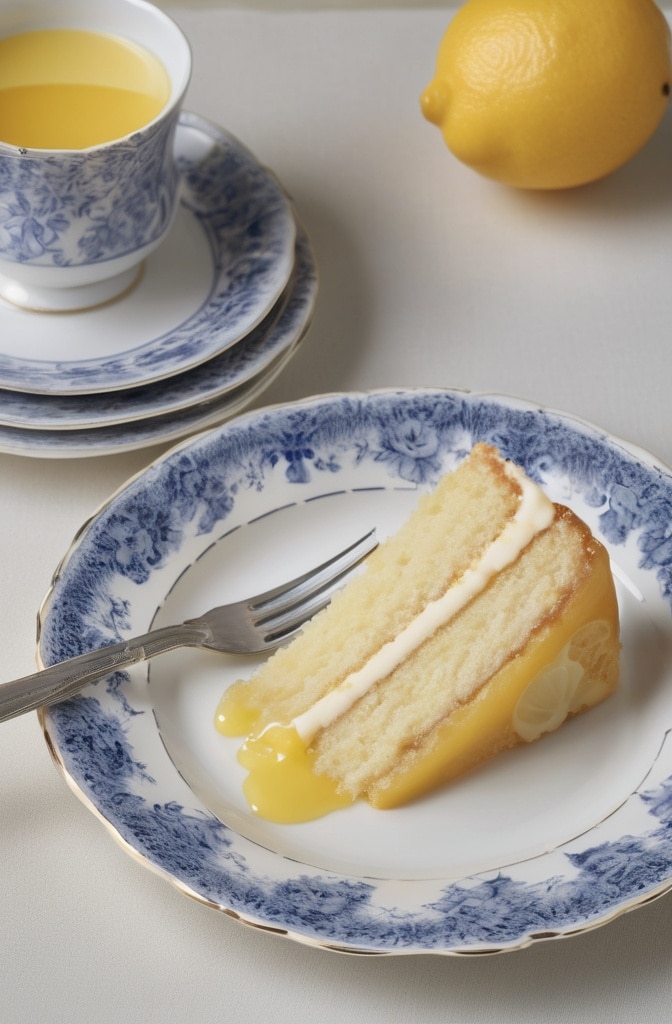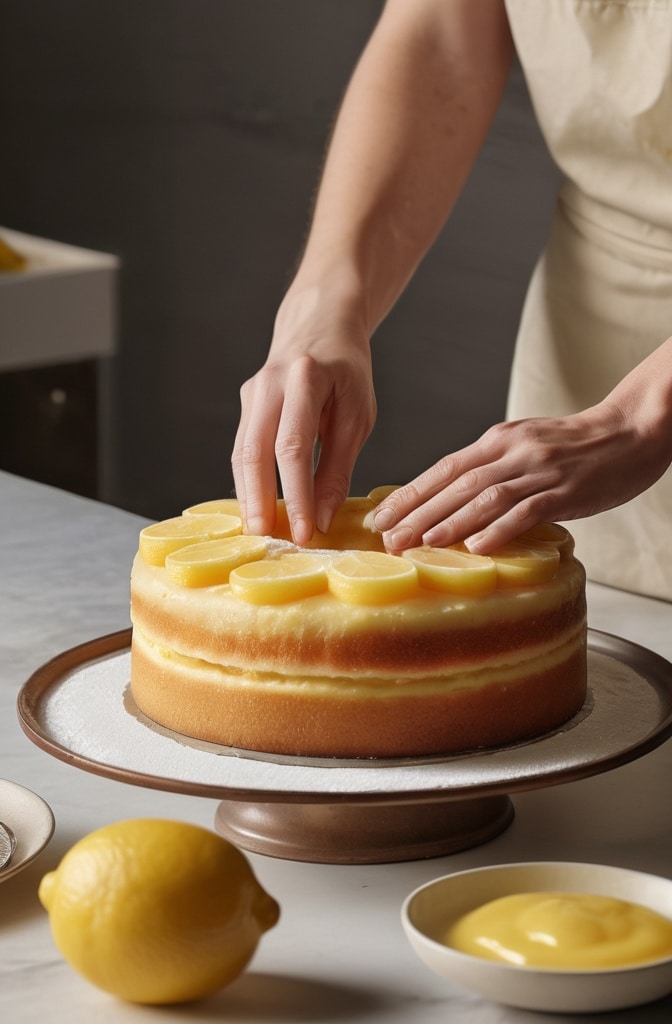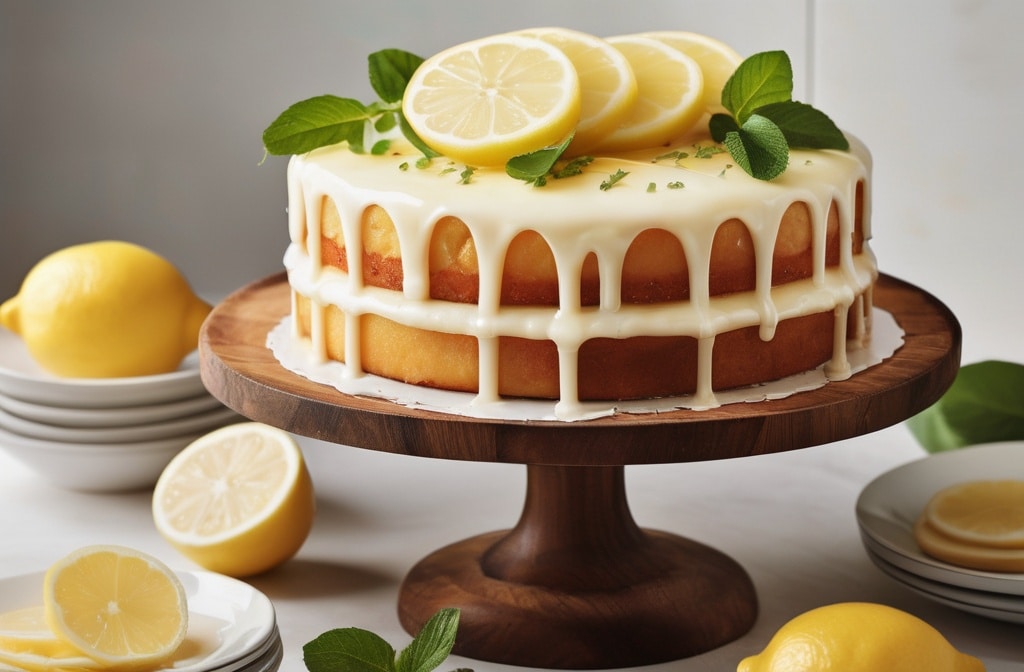Ever had a cake that made you close your eyes for a sec? Like, close e’emcheeks puffed, shoulders dropped, time paused? This lemon cake… oh baby, it’s that kind of cake. I once served this to a pastry chef in Florence who said, “What the hell did you put in this?” No fancy tricks. Just real lemons, butter like sunshine, and a method so clean it sings.
A LEMON CAKE TO DIE FOR! ain’t just another yellow sponge slathered with icing and dressed up in citrus perfume. Nope. This one’s got body. Texture. The aroma that hits you two rooms away. A rich crumb, tight but tender. Glossy lemon glaze crackling on top like candy glass. It’s bold and bright and won’t apologise for being loud.
A LEMON CAKE TO DIE FOR! draws its magic from technique. Not shortcuts, not box mixes, not guesswork. We’re talking emulsified butter, balanced acidity, and precision when it counts. It’s a cake that works for brunch, tea, birthdays, even weddings if you know how to dress it right.
Ingredients & Substitutions
A LEMON CAKE TO DIE FOR! begins with this powerful, aromatic cast:
- 1 cup (226g) unsalted butter, room temp
- 1 ¾ cups (350g) granulated sugar
- Zest of 3 large lemons (don’t skimp!)
- 4 large eggs, room temp
- 2 ½ cups (300g) all-purpose flour
- 2 tsp baking powder
- ½ tsp baking soda
- ½ tsp fine sea salt
- ¾ cup (180ml) full-fat sour cream or Greek yogurt
- ¼ cup (60ml) fresh lemon juice
- 2 tsp pure vanilla extract
Sub for sour cream? Use full-fat plain yogurt. Buttermilk will do, though it’ll thin the batter slightly. Avoid skimming anything—fat = flavour = texture.
Gluten-free bakers, you’re fine with a 1:1 gluten-free flour blend, just sift it well. Don’t use almond flour alone—it’ll sink the cake like a boat full of bricks.
Lemon zest is non-negotiable. That’s the soul right there. Bottled juice won’t cut it. If you must, add a few drops of lemon oil to revive the flatness.
Butter note—use European-style butter if you can. Higher fat, creamier flavor. Makes the crumb richer, more velvety.

Step-by-Step Instructions
A LEMON CAKE TO DIE FOR! starts with infusing sugar.
Rub that lemon zest right into the sugar using your fingertips. This ain’t a garnish. It’s extraction. The oils bloom right there in your hands. Sugar goes yellow, smells like a lemon grove in heat.
Cream the butter and lemon sugar until it’s pale and fluffy, about 3–4 mins on medium speed. Don’t rush. This is your air. Air rises. Rise is glory.
Add the eggs one at a time. Beat each in fully before adding the next. Room temp is key here. Cold eggs curdle the butter. If that happens, toss in a tbsp of the flour mix to bind it again.
In a separate bowl, sift flour, baking powder, soda, and salt. No clumps allowed. Mix lemon juice, sour cream, and vanilla in another bowl.
Alternate dry and wet into the butter mix. Start and end with dry. Use low speed or fold gently. Overmixing activates gluten and your cake turns into a lemon brick.
Pour batter into a greased 9×5” loaf pan or a 9” round if you fancy. Smooth the top. Bake at 325°F (163°C) for 55–65 mins. A skewer should come out with just a few moist crumbs.
Let it cool for 15 minutes, then remove from the pan. Cool fully on a rack. Glazing a hot cake = glaze slides off like sad syrup.
Cooking Techniques & Science
A LEMON CAKE TO DIE FOR! works because of emulsification. Creaming butter and sugar traps air, and that’s your structural lift. It ain’t magic—it’s physics.
Acid and base—lemon juice (acid) meets baking soda (base). They fizz, lift, and create a tender, open crumb. That fizz is doing more than you think—it’s flavour and fluff in one reaction.
Sour cream doesn’t just add fat. It balances the acidity and boosts moisture. Plus, it helps the cake age gracefully. Honestly? It tastes better the next day.
Room temp eggs and butter—they blend better, trap more air, and create a smoother batter. Cold stuff ruins structure.
A lemon syrup glaze, if used, penetrates the cake’s surface and locks in moisture. It also gives that pop of sweet-sharp that sticks in your memory. Use equal parts sugar and lemon juice. Boil, then brush on warm cake.
Equipment tip—use a heavy metal loaf tin, not glass. Glass bakes uneven. You want crisp edges, golden base, and no raw core.

Serving & Pairing Suggestions
A LEMON CAKE TO DIE FOR! deserves a pedestal. Literally. Cake stand, white porcelain, no distractions. Just that glossy yellow crown.
Serve thick slices, slightly warm, maybe even toasted. Add a dollop of crème fraîche or mascarpone. A blueberry compote? Oh yes, that’s divine.
Want contrast? Pair it with cold-brew coffee. The bitter depth balances the brightness.
Wanna go extra? Drizzle with a lemon-lavender syrup. Or dunk in a white chocolate ganache. Not traditional, but who said we’re playing safe here?
This cake even works sliced thin in trifles. Layer with whipped cream, berries, maybe some lemon curd if you’re feeling bold.
Conclusion
A LEMON CAKE TO DIE FOR! It ain’t just a recipe. It’s an experience. It’s memory in crumb form. It’s zing and comfort, sun and shadow.
Don’t skip the zest. Don’t fear the butter. Respect the mixing steps. Little tweaks change everything.
This cake stays moist for days. Freezes like a champ. Travels well, too—wedding favours? Bake sale hit? Grandma’s birthday? Done.
Bake it once, and you’ll bake it again. It’s that kind of cake. The kind folks ask about even after the crumbs are gone.
FAQs
Can I make this lemon cake ahead of time?
Yes! It’s better the next day. Let it cool fully, then wrap it tightly in plastic. Keeps for 3–4 days at room temp or freezes up to 3 months.
Why did my lemon cake sink in the middle?
Usually, it’s underbaking or opening the oven door too early. It could also be overmixing the batter—too much gluten. Use an oven thermometer and don’t peek too soon.
Can I use bottled lemon juice?
I mean… technically? But it won’t taste the same. Fresh lemons = real flavour oils, aroma, and punch. Bottled juice’s just flat. Add a few drops of lemon oil if desperate.
How can I make this cake gluten-free?
Use a high-quality 1:1 gluten-free flour blend with xanthan gum. Don’t use straight almond or coconut flour—it needs structure. You may need to reduce the liquid slightly.
What pan should I use if I don’t have a loaf pan?
A 9” round cake pan works well. You can also use a bundt pan for fancy vibes—just adjust baking time and grease every crevice.

Olivia P. is a seasoned food blogger at Tastywink, sharing delicious, easy-to-follow recipes inspired by him passion for home cooking. With years of culinary blogging experience, he brings flavor, creativity, and a personal touch to every dish.
